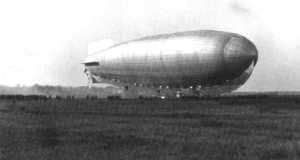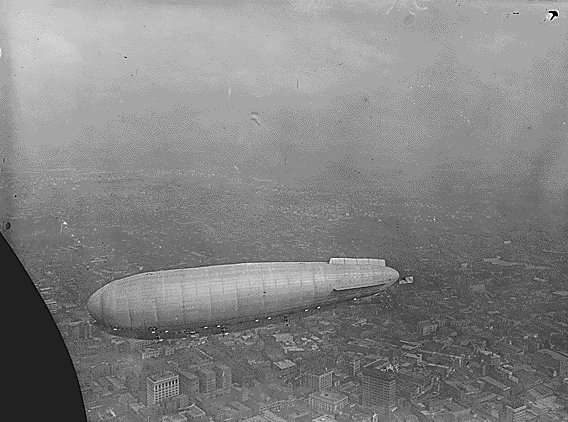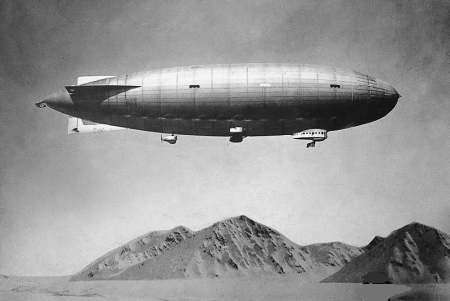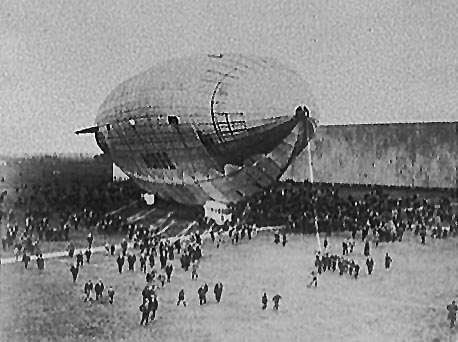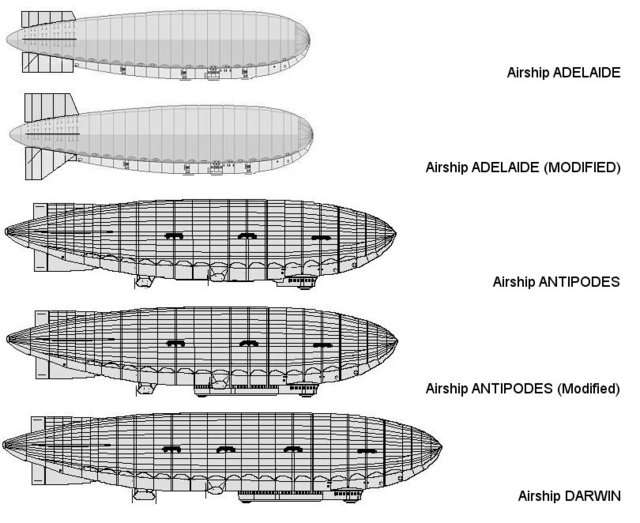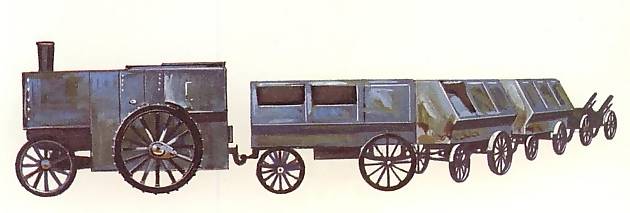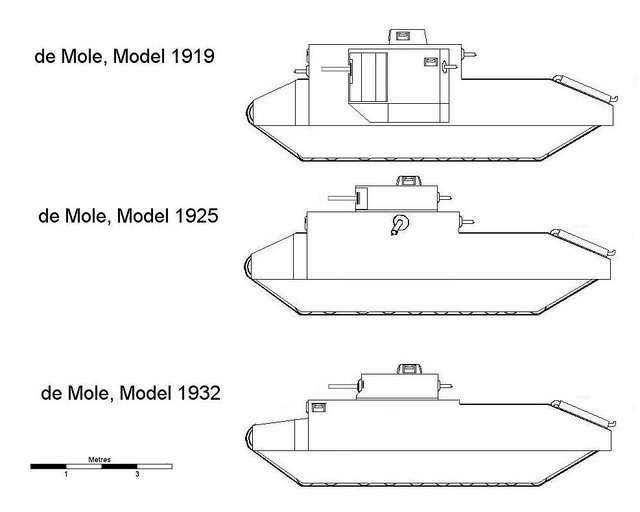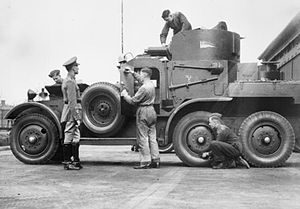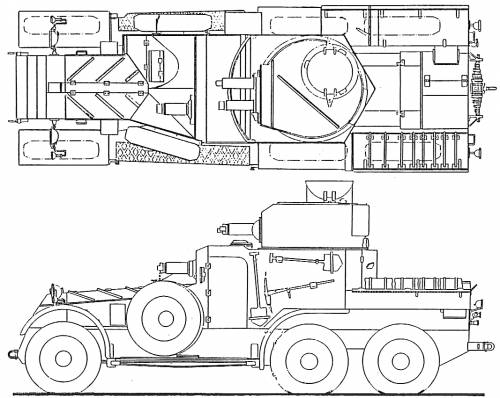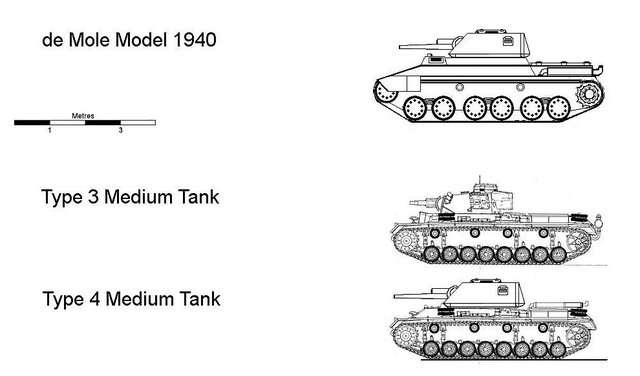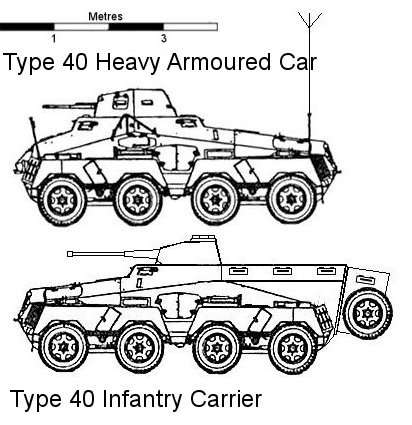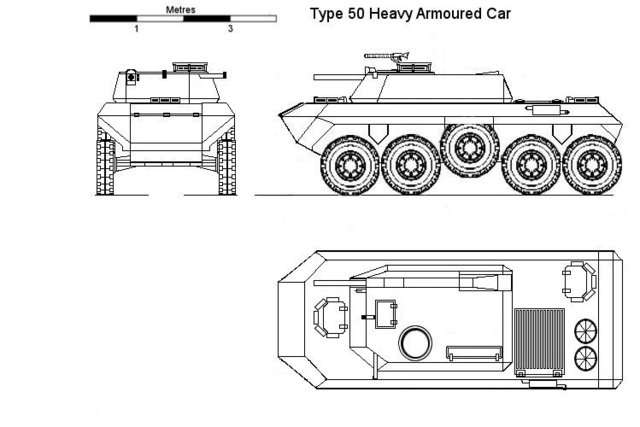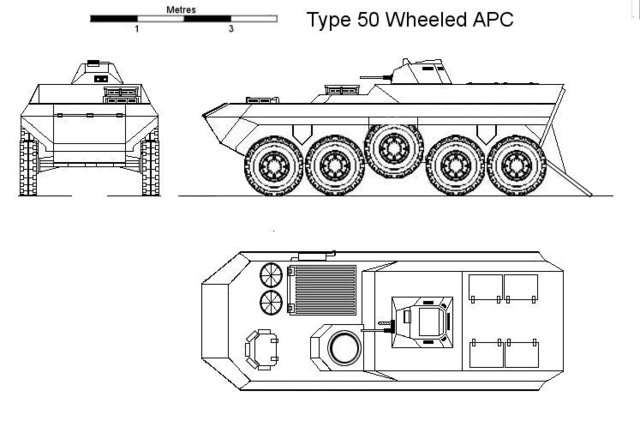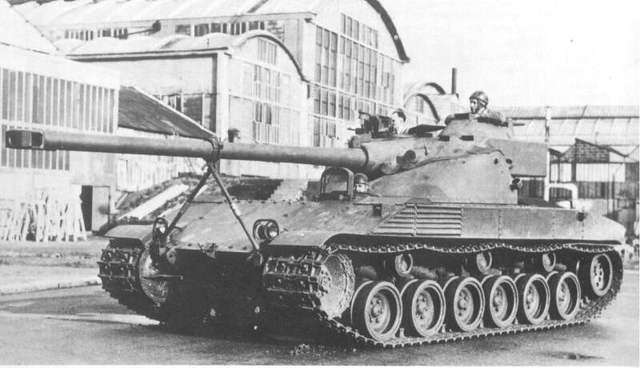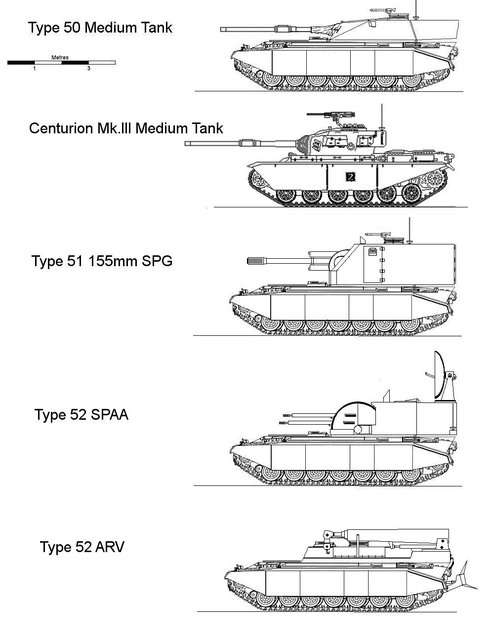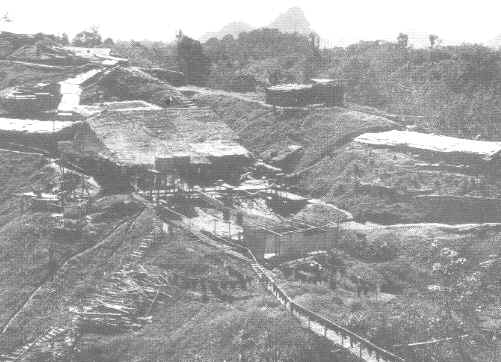Remember Eureka! A Military History
Part 2 – 1940 to 1965
Returning to armoured vehicles, the CAR had continued development of its de Mole tanks, introducing improved suspension and armament. The Dominions sought a response than just armoured cars and adopted a combination of Vickers light tanks and Vickers 6 ton tanks. Armed with Heavy Machine Guns or a 2 Pdr guns, they were seen as the answer to the CARA's de Mole tanks. By 1939 the de Mole design was looking decidedly dated, having been surpassed by overseas developments such as the Vickers vehicles although the CAR had attempted to maintain their lead. Therefore the CAR negotiated licenses in 1940 for the manufacture of the Daimler-Benz series of heavy armoured cars from Germany. 8x8 drive, with independent steering, they formed the basis of a family of heavy armoured cars which were ideally suited for use in the long range patrols that were foreseen as forming any potential future war. They also negotiated licenses for the production of Panzer III tanks. Victoria did not adopt any new tank or armoured cars until 1942.
When the Dominions' forces went off to war when Britain called, they served mainly in North Africa and the Middle East. There, the style of warfare they had developed since before the Great War, what today would be referred to as "doctrine" suited them well. Striking deep into the desert with mobile columns they quickly became the scourge of the Axis and Vichy forces they faced.
With the outbreak of the Pacific war, suddenly the threat became a great deal more immediate and the war moved much closer to home. With the development of an existential threat on their doorstep and the possible cutting of sources of external supply, just as with the aeronautical side of the war effort so the land forces were forced to rationalise and seek solutions closer to home.
Considerations had to now be made on how to fight the war on the Australian continent, rather than somewhere else. Seizing upon their experience in the Middle East and the Western Desert, the Australian forces decided that rather than attempt to fight a war of positional warfare it would be better to adopt one of manoeuvre with mobile armoured columns moving rapidly to out manoeuvre the Japanese once they had landed.
At the 1942 Armaments conference which was hurriedly called, the representatives of industry and the military met to plan their response to this threat. Several items were on the agenda.
1. Armoured Vehicles
1.1 Tanks
Lancelot de Mole had not been idle in the intervening years since the adoption of his original design in 1919 and brought forth the latest version of his tank. De Mole's tank however bears further examination. As with the previous versions, it was considerably ahead of its time. Heavily armoured with over 80-100mm of armour plate it was superior to anything then being fielded in 1942 anywhere else in the world. Also, all the armour plates had considerable slope, effectively increasing their thickness and improving their chance of deflecting enemy shells. Armed with a 76.2mm cannon able to fire both HE and AP ammunition at high velocity, it was superior to most British and American tanks and comparable to the German Panzer IV and the Russian T-34 and KV-1. Unusually, de Mole had opted for leaf-spring suspension, just as he had on his earlier tanks claiming it was cheaper to produce and easier to repair than most other suspension systems. However the suspension limited the vehicle's speed to only 40 km/h. Also, unusually it still relied upon steam for propulsion. While all other tanks were either petrol or diesel powered. De Mole's steam engine however was considerably more powerful and weighed much less. Developing over 1,000 hp from a boiler not much larger than that of a common household bucket, it also consumed considerably less fuel and lubricants and gave the vehicle an excellent performance on rough terrain.
The CAR Tank Type 4 was placed in competition to it. Based on a lengthened and widened Panzer III chassis it mounted a short 75mm cannon firing Monroe Effect "hollow charge" (HEAT) ammunition. Further, its armour was made up of flat plates and was only a maximum of 60mm. However it had a superior turn of speed being able to reach and maintain a speed of 60 km/h using a petrol engine based on a shortened DB600 aeroengine (10 instead of the usual 12 cylinders) developing 800 hp. Its suspension was based on torsion bars and offered a superior ride at speed over that of the de Mole leaf springs which made it quite a sprightly performer.
The Dominion of Australia revealed its Sentinel tank. Armed with a 2 Pdr gun firing only AP ammunition, powered by three truck engines coupled together giving a top speed of about 45 km/h and utilising HVSS (Horizontal Volute Spring Suspension) suspension providing an excellent ride and having armour only some 40mm thick, it did not compare well against the other two designs. The one area it was more advanced was its use of cast rather than rolled armour, featuring some of the largest pieces of such casting done in the world at that time.
After considerable debate, the decision was made to combine the best aspects of the de Mole and CAR designs. The CAR hull would be modified to utilise the sloping flat plates of the de Mole design and its advanced and powerful steam engine. It would also utilise the turret from the de Mole vehicle with its high velocity 76.2mm gun.
1.2 Self-Propelled Artillery
The experience of fighting in the Western Desert had shown the need for mobile artillery which was able to keep up with the armoured units and preferably as well armoured as they were. The proposal was for field guns to be mounted on tank hulls and enclosed in armour. Examination of intelligence reports had suggested that it would best to have such vehicles made on the same chassis as those of the tanks they were supporting to ease maintenance and logistics. Therefore it was proposed to modify which ever tank chassis was chosen and move its engine to either the middle or front and place the fighting compartment at the rear and provide a fixed casement for the gun and its crew. This was accepted and was to be given the name
Yeramba (Aboriginal for spear thrower [similar to the more familiar
Woomera but from an Eastern dialect ]).
1.3 Armoured Cars
It was almost universally acknowledged that the CARA's Heavy 8x8 Armoured Cars were the best available. Carrying either a 20mm quick firing cannon or a short 75mm howitzer they were considered an excellent combination of armour, speed and mobility. Therefore it was decided that these vehicles would be adopted by all the Australian militaries.
CAR Heavy Armoured Car Type 40
However, a lighter, smaller reconnaissance and liaison armoured car was also required. The Dominions already had their light scout car
Dingo in production and so it was decided to adapt that one to the joint role.
Dingo Scout Car, Parading through Sydney, 1943
1.4 Infantry Carriers
The Dominions had followed the lead of the UK's military in adopting infantry carriers - small, tracked vehicles intended to act as infantry transporters in and around the battlefield. Modelled on the Universal Carrier Mk.II, the local pattern carrier was welded, rather than riveted in construction and mounted a Vickers MMG rather than a Bren LMG. To cope with the increased cooling needs of the Australian climate it had enlarged cooling vents as well. A successful and well liked vehicle their major problem was inadequate protection for the small number of troops (four) which were carried.
As an emergency measure, the Dominion of Australia had instituted a programme of building a modified, armoured truck named the "Carrier, Infantry, Armoured, light, Rover". Nicknamed the "mobile slit trench" the
Rover was intended to act more as a movable bunker than a true armoured fighting vehicle it could carry up to 6 men and was armoured to a maximum of 12.7mm on all sides. Utilising a Vickers MMG and the infantry passengers' own weapons, fired over the side of the vehicle, it was not adequate for mobile warfare.
Infantry Carrier "Rover"
The CAR, on the otherhand, had developed an infantry carrier based upon its successful heavy armoured car chassis. With engine moved to the front and the crew compartment to the rear it carried a 20mm quick firing cannon in a small turret and had doors at the rear to allow easy debussing of the passengers. It was able to carry a full ten man infantry section and all their requirements. Specialised versions had been developed to support infantry forces equipped with flame-throwers, mortars and infantry guns.
It was decided to cease production of the Infantry Carrier local pattern and turn over the production facilities to those of manufacturing the clearly superior CAR armoured infantry carrier.
2. Artillery
The standard calibres of field artillery between the various Australian nations could not have been more different. The two Dominions had standardised on the WWI calibres of 13 and 18 Pdr. By 1940, they had replaced those guns with the excellent 25 Pdr. The CAR had adopted 105mm. Victoria and Tasmania initially 75mm and then 105mm. The 25 Pdr had a considerably longer range than the 105mm field guns. The 25 Pdr gun was also lighter. A fact that did not go unmarked in the light of the initial battle reports from fighting the Japanese that had come back about the problems of Jungle Warfare.
There was also consideration of the needs for self-propelled artillery as already mentioned. It was decided to standardise on the 25 Pdr which was considered adequate and with its longer range and comparative light weight, were more suitable to rapidly manoeuvring warfare and also Jungle conditions. Orders were given to adapt it to the Self-Propelled chassis mentioned above and a light-weight version for jungle warfare. Ammunition facilities presently manufacturing 75mm and 105mm rounds would be converted as quickly as possible to 25 Pdr production.
Some consideration was also given to the development of recoilless artillery, particularly for Jungle Warfare. The CAR was well aware of the work done in Germany in this field and had received in 1941 examples of the Rheinmetall 75mm Recoilless Gun, examples of which had seen service during the invasion of Crete. However more development was needed, it was felt and so this was seen more as a long range project.
3. Small Arms
The Dominions had long looked with envy on the CAR's Mondragons. While it was deemed the better weapon, the exigencies of the time decreed that the SMLE remain the standard weapon in the Dominions' forces for some time to come. However, it was ordered that they be changed over to the Mondragon as quickly as possible with a target date of end of 1944 being set.
At this point in time, no nation in Australia manufactured sub-machine guns. Instead they utilised imported Thompson or Sten guns from overseas. In particular the Thompson was expensive because its ammunition had to be imported and it was excessively heavy. The "Gangster gun" as Churchill had called it. The CAR had negotiated a license to produce the German MP40 and it was in limited use in their army. The Western Australians were negotiating a license to produce the British Sten Gun. The Dominion had two designs on offer. One, the Austen was intended to take advantage of the best aspects of the MP40 and the Sten Gun and utilised unused diecasting facilities in its manufacture. The other was a private venture from Lysaghts, a steel fabricating firm, and created by a young designer named Owen. Unusually it utilised a top mounted magazine. The decision was made to undertake extensive trials to see which would be the most suitable. After weeks of gruelling trials, the clear winner was the Owen Gun. It was therefore decided to start its manufacture immediately.
The next problem which was to be addressed was that of machine guns. The Dominions had three main types in service - the Vickers MMG, the Lewis and the Bren LMGs. Victoria had the Browning Automatic Rifle LMG and the Browning .30cal MMG. The CAR still had large numbers of the MG08 Maxim MMG and the Madsen LMG, despite the widespread adoption of the MG34 in 1940. After considerable deliberation the decision was a compromise. Older weapons would remain in use but would eventually be replaced by the MG34 with the target date being again, the end of 1944. Preparations would be made to facilitate the change over by preparing production and stocks of the new ammunition calibre.
This was essentially the plan hammered out between the various representatives. By the end of 1944 their respective militaries would be transformed considerably. Each infantryman would be equipped with a powerful, semi-automatic rifle and would be supported by modern machine guns which be utilised in either the light or medium role. There would be modern, powerfully armed, fast tanks and armoured troop carriers, able to range widely and quickly across the landscape.
4. Co-operation
It was agreed that greater co-operation was required between the high commands of each of the national armies. The result was, under the urging of General Macarthur that a joint Headquarters be set up and each national army be subordinated to it. This was, in principle agreed to and the Australian Armies Joint Headquarters (ASSJHQ) was set up immediately with General Blamey in command. This headquarters was tasked with both co-ordinating and organising the defence of the Australian continent and carrying out offensive operations against the Imperial Japanese forces which were attempting to isolate the continent.
In the Meantime though....
In the meantime though, the Japanese weren't quite so willing to co-operate. Defeated at the Battle of the Timor Sea, the Japanese adopted an alternative strategy attempting to isolate Australia and preventing the United States from reinforcing and using the Australian continent as a base for offensive purposes. This entailed occupying the intervening islands and building airstrips from which aircraft would be able to attack convoys trying to run the blockade. The result was a series of campaigns fought in some of the most remote and inhospitable parts of the Earth in the South and South-West Pacific. The Japanese effort reached its high water mark when they invaded and captured the Loyalty and New Hebrides Islands.
Ever fearful though, of a Japanese attack on the mainland, the Australian Governments kept a large reserve of forces present. This meant that effectively for each nation two armies were created. A "home army" which was equipped and trained for open, manoeuvre warfare with tanks, self-propelled artillery and armoured troop carriers. There was also an expeditionary army, more lightly equipped, intended for operations in the Islands or the New Guinea highlands. It was this army which fought the Japanese, first to a standstill and then all the way back to the Japanese home islands in company with the United States and other allies. With the changing nature of the war, moving from remote, jungle clad islands to the developed Japanese home islands, it was decided that the expeditionary army's nature must changed as well. It came to resemble more and the home army, equipped with tanks, self-propelled artillery and armoured infantry carriers.
However the Type 4 medium tank was never to serve overseas because of problems encountered with its steam powerplant when a troop were sent to New Guinea for trials. The use of "dirty" water had fouled their boilers and prevented them from being able to achieve full power. While a fault of the crews, it pointed to potential problems of operating where water was of dubious quality. The result was that M4 Shermans were instead purchased from America and used during Operation CORONET and DOWNFALL, the invasions of the Japanese home islands. The force that landed in Japan was a well-balanced mechanised force supported by Australian air forces and a small naval contingent. They fought through out the Japanese campaign until the Atomic bombs were dropped, earning increased respect from their Allies.
Post War developments
After the defeat of Japan, Australian militaries settled down to a period of peace in which to digest the lessons of war and reorganise themselves. In the immediate post-war period, the Dominion of Australia established its first full-time, regular military units in 1947. The Royal Australia Regiment was the keystone of this effort. Up until this point, the small, pre-war regular army had been made up primarily made up of a cadre of staff officers and small units dedicated to coastal defence artillery, defending the ports. Defence had largely rested on the "citizen-soldier", the part-time members of the Militia who paraded once a week, weekends and did an annual field exercise. This had been adequate in an age where communications were relatively slow and mobilisation was allowed to take some time. In the new Atomic Age such relaxed attitudes were no longer considered adequate. The CAR followed suit, establishing its own regular army units. The other nations beset by both economic and demographic problems were unable to do so and continued to rely primarily upon "citizen-soldiers" for their defence.
In the longer term, the other lessons of WWII were not completely ignored. While the ASSJHQ was dissolved it was not forgotten. The military forces of the Australian Nations held regular joint planning conferences and joint exercises. Equipment decisions were often made in conjunction with each other to ensure commonality of equipment. Training was largely standardised and doctrine expanded to ensure that everybody was "working on the same wavelength" as to how operations should be conducted and engagements fought.
Out of necessity and cost, the Type 4 tank was retired and replaced with M4a3e8 Shermans. The gun from the Type 4 however was superior and so the US 76mm gun was replaced and minor modifications made to the turret fittings to allow the slightly larger CAR 76.2mm rounds to be stowed. After the experience against the Japanese where the MG34 had proved prone to overheating in the tropics when used in a sustained fire role, Vickers guns were modified to accept the 7.92mm cartridge and placed back in limited service in the sustained fire role where they provided sterling service, even if the old-timers grumbled they weren't quite as accurate.
The establishment of these regular military forces also occurred because of the needs to maintain an Occupation Force in Japan as part of the Allied effort to disarm and civilianise Japanese society. By 1950 though, the expense was proving too great for the Dominion and the CAR and so the Occupation Forces were being wound down. On 25 June 1950, the Democratic Peoples Republic of Korea invaded the Republic of Korea, crossing the 38th Parallel in force. The ROK's army, reeling back in shock was forced to retreat and abandon its capital, Seoul. General Douglas Macarthur, commander of the Occupation Forces in Japan, rushed aid to the South Koreans. In a hurried telephone conference, the Prime Ministers of the Dominion of Australia and the Central Australian Republic agreed to provide forces to General Macarthur in Korea. Within hours fighter aircraft from the CARAF and the RAAF were in action, bombing and strafing the advancing Korean Peoples Army columns. Preparations were well in hand for the return of 3rd Battalion, Royal Australian Regiment to Australia in the wind down of the Australian Occupation forces. Immediately orders were issued to reverse the flow of men and materiale and bring the unit back up to strength. At the same time, the unit was given an intensive pre-embarkation training programme which drove the men day-and-night to prepare them for combat in Korea. By the time they landed at Pusan on 28 September, the worst of the fighting in Southern Korea was over. With the decisive landings at Inchon on 15 September, General Macarthur had cut the supply lines of the KPA units investing Pusan and so forced them into a massive retreat, back up the Korean Peninsular to whence they had come, pursued by ROK, US and Allied forces, including Australian and British units.
China then intervened 2 October 1950, forcing in turn the United Nations and ROK Army units into retreat by threatening to cut them off from their sources of supply. They fled back down the peninsular to just south of the 38th Parallel and entered into a stalemate with each side seek advantage while peace talks took place seeking an armistice. Each side created continuous lines of entrenchments reminiscent of the Western Front. It was here that the Australians with their long tradition of aggressive patrolling came into its own. Every night a patrols went out into No-Man's Land and contested with the Chinese and North Koreans who faced them. The success of the Australian patrolling was summed up by the comment in the Official History which stated:
A Company, 3 RAR, ambushed a strong enemy force at dawn as it was returning from a nocturnal incursion, killing 10 North Koreans before the survivors were able to disengage. The Patrol Commander, Sergeant John Robertson reported, "Enemy patrol, sir, they didn't like it, so they left."
3 RAR was succeeded by 2 RAR in 1952. The Australians were considered "most difficult" by the opposing forces with at one point a captured copy of a Chinese intelligence report being read in the Dominion Parliament which made the point:
There are two hills in front of your position. One is well lit at night and the trenches are quite noisy. This is garrisoned by capitalist traitors from south Korea. The other hill is silent and dark. DO NOT attack this hill! It is garrisoned by Australians who are dangerous foreign devils! They will cause no end of trouble for you. They sneak and ambush when you least expect it. They are stout in attack and defence. Be very careful of these white devils!
While perhaps apocryphal, the heavy firepower that the Australians were able to bring to bear using their Mondragon rifles, Owen SMGs and MG34s and even some venerable Vickers guns was considerable and much more than was expected from comparable units in the ROK, US or British Armies. When coupled with their discipline and cunning, it was obvious that the Chinese felt disadvantaged when facing them.
When an Armistice was finally declared in 1953, 350 Australians had been killed during the Korea War. After the Vietnam conflict, it was to be the largest number of battle deaths Australia was to experience after WWII but has been largely forgotten.
Re-Armament
Work had begun in 1950 under the impetus of the outbreak of the war on several projects. Perhaps the most notable was that of a family of new AFVs and a Medium Tank.
Armoured Car
Engineers started from the basis of the Type 40 Armoured Car which had been so successful and the Type 4 tank. They also drew upon experience overseas and looked closely at the SdKfz.240 "Puma", the French EBR, the British Saladin armoured car and the American M8 Greyhound. The result was an 8x8 vehicle mounting an autoloaded 105mm recoilless rifle which fired HEAT ammunition. It could be driven either forward or in reverse at top speed and steered from either end. This chassis was to provide a basis for a family of AFVs. An Armoured Personnel Carrier (APC), engineers, mortar carrier and a logistics versions were also to be built. While the armoured car was to be rear-engined, the other variants were to be front-engined. The other major difference was the shape of the hull, with the armoured car having a significantly lower and better shaped one and mounting a turret. Another addition to the family was a small, 4x4 variant intended for reconnaissance and liaison duties. All were intended to be amphibious, propelled in the water by waterjets.
Tank
CAR engineers looked closely at the wartime experience overseas of the German, British, American and Soviet Armies with tank design. Ideally they would have preferred to build two different vehicles - a medium and a heavy design. Economic realities meant that they had to instead accept a compromise and so it was decided to mount the most powerful gun available - a 84mm gun on a medium tank chassis. Drawing upon their experience with the de Mole, Panzer III and Type 4 tanks they produced a new chassis using once again torsion bar suspension. This time however, it was decided to utilise a diesel engine and they accepted a recommendation from Holdens to utilise a version of the DB602 which they had license right to. They had two alternative proposals. One was to utilise the engine to mechanically drive the tracks via a gearbox. This would entail shortening the engine from a V16 to a V12 configuration which would have it develop only 1,000 hp. This would still make it more powerful than most other medium tank engines which averaged less than 750 hp. With a weight of approximately 50 tons, this would give it a ratio of 20hp per ton, which was higher than most other mediums of the period (Centurion 12.5hp/ton, M47 17.2hp/ton, T44 16.7/ton). The second alternative was to leave the engine as a V12, have it develop 1,350 hp and use it to drive a generator and utilise electric drives to drive the tracks. This drew upon the experience in diesel ship and locomotive designs. While more expensive in the use of copper it had the advantage of eliminating the gearbox and have the engine run at its optimum efficiency continuously.
After much deliberation the decision was made to go with the electric drive. The CAR was rich in copper and so it was relatively cheap, compared to overseas (to the point where the CAR had earned the nickname "The Copper Kingdom" in the 19th century and had been by the end of the 19th century the world's second largest producer). The electric drive would also make building the vehicles easier as a heavy drive train and gear box was no longer required. Equipped with four 600hp electric motors, two on each track, the vehicle would have a better power to weight ratio as the mechanically driven version.
Unusually, the decision was also made to make the tank front-engined, allowing easier conversion to other roles such as self-propelled gun by having a rear fighting compartment. However, this would normally have necessitated a higher turret to allow sufficient depression to allow the tank to take up reverse slope positions. The CAR designers came up with a novel solution in the form of what they called a "cleft turret" - which had an opening which allowed the breach of the gun to protrude through the roof of the turret when at maximum depression. Some consideration had been given to the possibility of utilising an autoloader but a human loader was retained. A coincidence rangefinder was installed to improve engagements at long range.
The result was a low, well shaped vehicle which carried a maximum of 120mm of armour on its front and 80mm on the sides. Equipped with a high velocity 84mm gun, it was more than a match for any tank then in service around the world. It proved a sprightly performer and an accomplished hill climber when trialled against overseas designs such as the Centurion and the M47. With the outbreak of the Korean War spurring development the first prototypes were ready at the start of 1953.
However, with the end of the Korean War a joint decision was taken to place both projects on hold until the lessons from that conflict were digested. The result was the famous Australasian Military Conference of 1954.
Australasian Military Conference - 1954
Occurring 12 months after the end of the Korean war this conference was one of the annual conferences which had started in WWII between the Australasian nations to discuss military matters. However, the 1954 conference was to assume considerably more importance than was really understood at the time as the decisions made during it were to have greater ramifications than normal. Taking place against the background of the general discussion of Federation and the possibility of amalgamation, it's decisions were to effect the Australasian militaries much more than normal.
The most important discussion was about the lessons learnt from the Korean War. The Dominion and the CAR as the dominant partners in military matters had both, as already related, contributed military forces to that conflict in conjunction with the United Nations and most notably the UK and the USA. Perhaps the biggest lesson which was learnt was the lack of commonality of materiale amongst the Australasians and their coalition partners. The UK was still using .303in rimmed as their main small arms round. The US .30-06 rimless. The Dominion and the CAR 7.92mm rimless. This had caused problems with resupply. The Australasians were well aware of developments overseas, particularly amongst NATO nations to standardise on a single calibre. After careful deliberation it was decided that hence forth the Australasian nations would change to the new NATO standard calibre of 7.62x51mm rimless. This would necessitate either the adoption of new weapons or the adaptation of existing ones. The decision was taken to create a joint competition for a new rifle and a new machine to fire this new cartridge with adoption starting in 1957.
THe next problem was that of armoured vehicles. The Australasian contingents had not fielded any tanks in Korea but had noted the performance of the British Centurions and the American Shermans and Pershing tanks. Of the three, the Centurion had clearly been the best and so it was decided that a joint competition would be undertaken to replace the now very aged Shermans and the few Type 4s still in use. As far as armoured cars and personnel carriers were concerned, the decision was taken to adopt the new 8x8 family of fighting vehicles which the CAR had developed at the beginning of the Korean War. This family included reconnaissance vehicles, APCs, Mortar Carriers, Engineers Vehicles and a logistics carrier.
The 1954 conference also decided to reform the ASSJHQ. It was intended that closer co-operation and joint planning would start again, even if the much discussed and hopeful plans for Federation and amalgamation did not occur. If they did, then the Australasian militaries would well placed to put into action plans to amalgamate their forces with the minimum of disruption. A not unimportant consideration with the intensity of the Cold War increasing.
Federation
When Federation did come the major effect it had on the military forces of the various nations was that of amalgamating them into a proper national army for the new nation. Most of the hard decisions though, had already been made and prepared for. The target was a balanced military force of about 75,000. To achieve that though, the sad part was that many units with proud histories had to be dissolved. The duel nature of the armies though continued. A small professional military force and a much larger militia force made up of "citizen-soldiers" who could be called to the colours in time of crisis.
As the dominant partners the CAR and the Dominion came to dominate the new Commonwealth's army. The high command was shared between senior officers with wartime experience both during WWII and Korea. At the time of Federation, the Dominion already had a unit, 1 RAR committed to the Malayan Emergency fighting against the "CTs" - Communist Terrorists who were attempting to overthrow first the British and then independent Malayan governments.
By the time Federation occurred, the two joint acquisition competitions had become two national acquisition competitions. One for a new family of small arms, the other for a new medium tank. The winners were announced in 1956.
The competitors for the small arms competition were:
Rifles: Belgian FN FAL, Spanish CETME Model B, German G3, Swiss SG510, American T44
Machine Gun: Belgian FN MAG, German MG3, American M60.
The winner for the rifle competition was declared to be the German G3. The FN FAL came a close second followed by the SG510, the T44, the CETME Model B. The winner of the Machine Gun competition was declared to be the German MG3 followed closely by the FN MAG and last by the M60. Licenses were to be negotiated for them to be produced in the new Commonwealth of Australasia at the Lithgow small arms factory.
The competitors for the Medium Tank competition were:
Britain - Centurion Mk. V
USA - M47
USA - M48
Australasia - Type 50
France - Batignolles Chatillon-25t
The winner was declared to be the Type 50, followed closely by the Centurion, then the M48 and finally the M47. The Batignolles Chatillon-25t was rejected outright as being closer to a light tank than a medium with insufficient armour although it did carry a 90mm gun. The Batignolles Chatillon-25t was however commended for several innovative features including the use of an oscillating turret to mount its main gun.
Batignolles Chatillon-25t
A family of AFVs was developed around the Type 50 chassis with a 155mm Self-Propelled Gun, a SPAA with 4 30mm water-cooled cannon and a search radar, an ARV (Armoured Recovery Vehicle) and an AVLB (Bridge-Layer).
1956 also saw the Cold War intensify considerably. The Soviets invaded Hungary. The Olympic Games also came downunder to Melbourne. The clash between the Soviet and the Hungarian water polo teams during the competition became the stuff of legend - "blood in the water" as it was on for young and old. Several Hungarian and Soviet athletes either managed or attempted defection. For a few short weeks, the new nation of Australasia embodied all the hatreds, rivalries and conflicts of the Cold War. The UK and France, in conjunction with Israel attacked Egypt and seized the Suez Canal which had been nationalised.
While the preference was within the CAA (Commonwealth of Australasia Army) to utilise wheeled vehicles because of their ability to self-deploy over the extended distances on the Australian continent, the growing need for a heavier, more tactically mobile APC suitable for use in Jungle or Atomic warfare was appreciated. In 1960 tenders were requested from manufacturers for a tracked APC and a competition was held for the limited procurement of such a vehicle. The UK submitted the FV432. France the VTT and the US the M113. After extensive trials in Queensland, the M113 was selected, primarily because of its superior mobility.
Konfrontasi
The next few years were a hive of activity for the new Commonwealth's army with re-equipment and re-organisation. At the same time, the Government increasingly found itself suspicious of events to its North, particularly in Indonesia. As already related, the West New Guinea affair erupted onto the scene without much warning and Australasia found itself very much out on a limb, unsupported by any of its allies and with military forces still suffering the effects of amalgamation and re-equipment. So it backed down, humiliatingly. The back down emboldened Sukarno with the result that he decided that "Konfrontasi" - Confrontation was the best method to achieve his aims. By directly confronting the retreating colonialists he could force them to accede to his territorial demands.
In 1965, "Konfrontasi" became a reality. Sukarno had declared that the newly created Federation of Malaysia was a "neo-colonial construct" and started to try and subvert the Malaysian government in the northern Borneo states. The UK, as the main security guarantor for Malaysia responded immediately and called upon the Commonwealth as its ally to contribute forces. Canberra, belligerent after its humiliation at the hands of Sukarno in 1960 offered the use of a battalion of infantry, as well as the already mentioned other supporting units from the armed services.
The Army did very well in Borneo, committing a battalion of regular soldiers and a squadron of the newly formed Australian Special Air Service Regiment. Patrolling the border and engaging Indonesia infiltrators, soon they came to dominate their AO (Area of Operations) and were conducting clandestine raids into Indonesian territory interdicting the infiltrators before they reached Malaysian territory. Not admitted to until 30 years later, these "CLARET" raids were undertaken under strict rules of engagement and ranged up to 50 km inside Indonesian territory. The Australasian experience in WWI, WWII and Korea of conducting aggressive and long range patrols deep into enemy territory was carried on here and did much to unsettling and deterring Indonesian aggression. However it was the success of Operation HAMMER and the subsequence coup and counter-coup which brought an end to Konfrontasi. As a battle honour, Borneo is not that well known, even in Australasia, overshadowed as it was by Vietnam.
Borneo reinforced the prevailing view within the Australasian Army that it was primarily an Infantry Army, with the other arms and corps primarily supporting the infantry as "the Queen of the battlefield". This was further buttressed by the experience of Vietnam. Even so, a core of officers with armoured knowledge and experience were able to maintain the army's understanding of armoured warfare.
Australasian Fire Support Base, West Borneo, 1965

